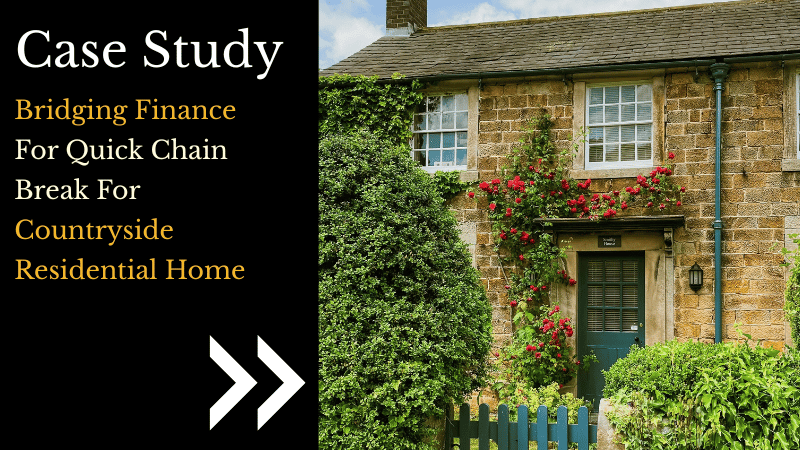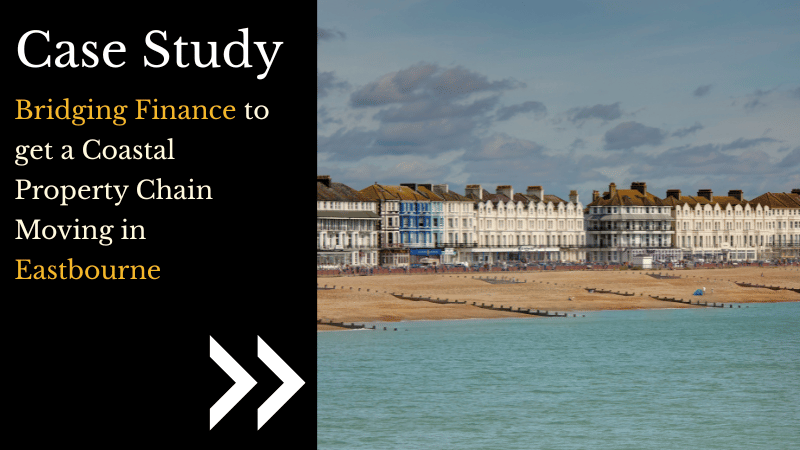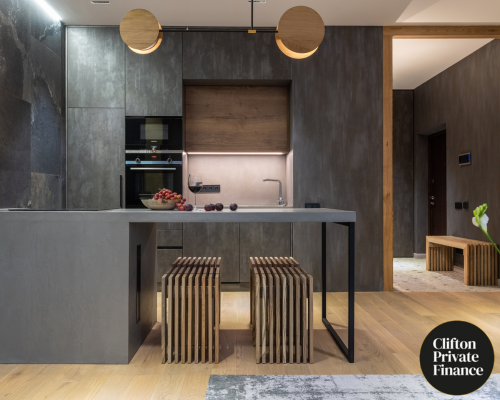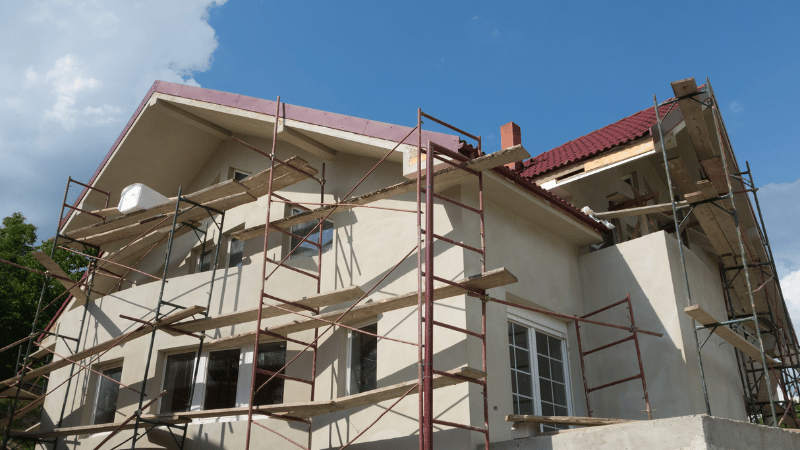Categories
3 ways to break a property chain
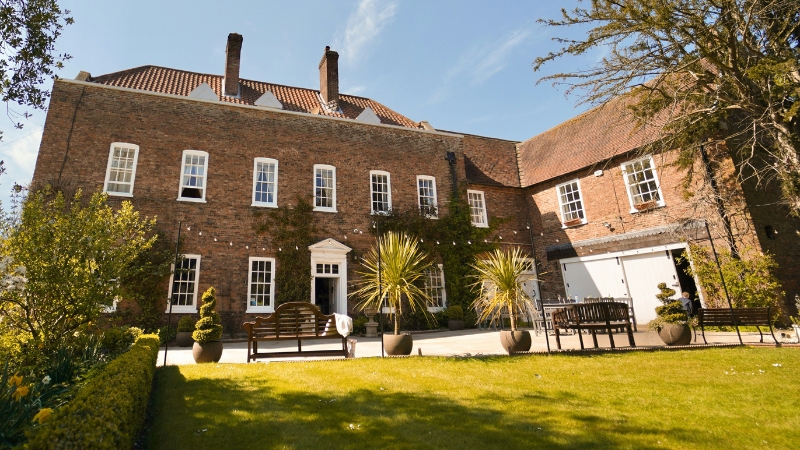
When you are stuck in a property chain and it starts to collapse behind you, everything is at risk. You may need to find new buyers for your home and the delays that come put your plans for moving forward into chaos.
Thankfully, there are answers to the problem. With our expertise at Clifton Private Finance, we can help you break out of the property chain and keep your hold on your dreams, finalising that sale and exchanging contracts even as the ground seems to crumble underneath you. Read on!
Looking for a Bridging Loan?
Get started with our calculator
An Overview of Property Chains
A property chain occurs when you can’t buy your new home until you’ve sold the one you’re in - you become reliant on your buyers to get all their obligations done before you can move forwards with your own.
Of course, they might be in the same position, with buyers beneath them holding up their situation, and those buyers may be no different, with more people below them… Each one of you is a link in the chain and no one can move forward until everything is lined up.
No one likes being the hold up in the property chain, and in some circumstances, blame can be thrown around as people’s hopes and dreams get ruined. If someone’s mortgage isn’t approved, the whole chain can crumble, with sellers needing to find new buyers, and potentially find themselves linking to a whole new chain.
In short: property chains are difficult to manage and cause huge delays in moving house. So how do you get out of them?
Breaking a Property Chain #1 - Sell First
The simplest way to make sure you don’t have any chain beneath you is to sell your home completely before you look to buy somewhere new. This way, the money is in the bank and you can complete your sale without any need to wait for someone else.
In an ideal world, everyone would sell first and there’d never be any sort of property chain.
If you’ve sold your home, then you obviously can’t live in it. You, your family, and all your furniture and belongings need somewhere to be. This can lead to all sorts of complications, though there are some answers:

Rent somewhere temporarily
Renting a home while you browse the market for the perfect new house is an option some people take. It can be especially useful if you’re looking to move to a new city, or even country, as you can test out the area before your commit.
However, renting has two key problems:
- It is expensive - Rents are continually on the rise, with many family homes costing thousands of pounds each month, especially in sought-after areas. Add in the cost of a deposit (which, thankfully, you’ll get back at the end), moving expenses, and administration, and it can add up quickly.
- It will come with contractual obligations - Renting isn’t quite as flexible as you might want, with most landlords insisting on 6-month or 12-month leases. If you find your new home two-months into a 12-month contract, it can be extra costly to get out early.

Use short-term accommodation
Hotels are a great option if you know you can move quickly, but very expensive if you end up without a home for an extended period. Plus, there’s the problem of your furniture and belongings, which will have to go into storage for the period.

Lean on family and friends
If you have the network, it may be possible to live with your family or friends. This keeps costs low (though storage still needs to be considered for furniture), but may put a strain on your relationships.

Go on holiday
You could always take the opportunity for an extended trip between homes, but then, who is doing the work of finding and buying the new house? Of course, if you have somewhere new all lined up and it’s just a few weeks for the paperwork to go through, then maybe that trip across Europe is calling…!
Breaking a Property Chain #2 - Let to Buy
Instead of selling your existing home, why not let it out? A let-to-buy (LTB) mortgage converts your current residential mortgage to a landlord’s interest-only mortgage, allowing you to rent out your property to tenants and free up some of the equity you’ve built up to buy your new home.
Letting out your home rather than selling it can be complicated - you take on the responsibilities of a landlord, have to find tenants or engage with a management company to look after the property, and will have to work with multiple mortgages going forward, but it has plenty of advantages, too.
When you let to buy, you:
- Keep your investment in your existing property.
- Can return to your old home at a later date, should you ever want to.
- Make profit each month through good property management.
- Potentially open a new path to becoming a landlord for the long term.
Plus, of course, you step away from the property chain.
Let to buy is particularly useful if you are merging property ownership, for example, when you become a new couple buying a house together when each of your owns a previous home - rather than selling up, you can each keep your earlier homes and let them out for income and investment.
To learn more, call Clifton Private Finance today and speak to a specialist LTB advisor.
Breaking a Property Chain #3 - Bridging Finance
To gain the power of a cash buyer without any of the expense of selling first, or the complexities of becoming a landlord with let-to-buy, consider a bridging loan.
Bridging finance is short-term funding that is secured against property. When you use it to break a property chain, you can leverage it against both properties - your existing home and the new one.
If you have a reasonable level of equity in your current house, this can lead to a deposit-free loan that’s effectively 100% loan-to-value (LTV), allowing you to buy your new house without needing any additional capital.
Costs to Bridging Finance
As with all debt finance, there is a cost to bridging finance - you will pay interest and fees - however, that cost is significantly lower than alternatives such as renting, and because bridging finance gives you the full sum needed to buy your new property, you have the negotiating position of a full cash buyer, able to move without delay.
Many sellers are extremely happy to lower their asking price in exchange for such rapid convenience, often completely offsetting the cost of bridging finance.
Bridging finance is an exit-based loan. You don’t pay monthly instalments, but simply clear the debt in full at the end of the term. For buyers using it to break a property chain, this means you pay it back once your old house is sold - there are no costs in the meantime to put a strain on your monthly finances.
Bridging finance is also extremely quick to arrange, making it perfect for seizing opportunities that traditional mortgages struggle to support, such as buying a house at auction.
For many property buyers, the steps of bridging finance to break a chain are as follows:
- Put current house on the market.
- Find a desired new home and make an offer.
- Realise that with the current property chain, there is a risk of losing the wanted new property.
- Contact Clifton Private Finance.
- Obtain bridging finance, secured on both the existing property and the new one, to obtain a 100% LTV loan.
- Negotiate a lower price on the new property thanks to the power of being a cash buyer.
- Use the bridging finance to buy the new property at a discount.
- Enjoy a 12 month window to sell the existing property, ensuring it meets full market value for extra profit.
- Pay off the bridging finance as soon as the old home is sold.
When it comes to cost-effectiveness, ensuring a strong negotiating position, and enjoying a smooth and rapid transaction, bridging finance is the perfect answer to property chain problems.
Breaking Out of a Property Chain with Clifton Private Finance
We’re here at Clifton Private Finance to bring you funding solutions to problems. Our experience, established relationships with the full market of UK lenders, and customer-focused finance tailoring means we can move quickly to solve your property chain challenges.
Looking to sell first, buy later? We can help with:
- Mortgage advice to get funding in place for the move as smoothly and quickly as possible.
- Lender comparison to secure the lowest rates and most flexible terms.
Considering let-to-by? We are here to:
- Match you to a specialist LTB lender who understands the complexities and can fully support the process.
- Work with you to present a clear business case for rental yield and repayment strategy.
- Provide low-cost funding solutions for property refurbishment prior to letting.
Looking for powerful bridging finance? We will:
- Advise you on the best route for bridging.
- Find you the right bridging lender to get you the funds as quickly as possible, while keeping costs down.
- Help you develop a comprehensive exit strategy for lender assurance and confidence going forward.
Our property-based finance teams are here to help you break free of the weight of the property chain, releasing you from costly delays and potential disappointment. To move quickly and secure the new home you’ve been dreaming of, contact Clifton Private Finance today.
